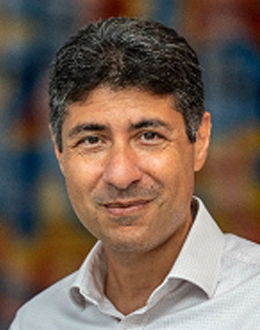THE 4TH INTERNATIONAL
SYMPOSIUM ON THERMAL-FLUID DYNAMICS
(ISTFD 2023)

THE 4TH INTERNATIONAL
SYMPOSIUM ON THERMAL-FLUID DYNAMICS
(ISTFD 2023)

Professor Omar K. Matar, FREng
Department of Chemical Engineering, Imperial College London, London SW7 2AZ, UK
Email: o.matar@imperial.ac.uk
Professor Omar K. Matar, FREng
Omar Matar (OKM), FREng, is a Professor of Fluid Mechanics and Head of Department of Chemical Engineering at Imperial College London. His research interests include the use of multi-scale, physics-informed, data-driven methods for the solution of complex non-isothermal multiphase flows with phase change. OKM is a Fellow of the Royal Academy of Engineering, the Institution of Chemical Engineers, and the American Physical Society, and a RAEng Research Chair in Multiphase Fluid Dynamics. He is the Principal Investigator of the £6.5M programme PREMIERE (PREdictive Modelling with QuantIfication of UncERtainty for MultiphasE Systems) funded by the Engineering and Physical Sciences Research Council, UK, which involves Imperial, Birmingham, Cambridge, UCL, the Alan Turing Institute, and a number of industrial and healthcare partners. OKM was the Director of the Transient Multiphase Flow Consortium (2011-2020) which comprised 15 energy companies (including TOTAL), and software and design houses. He has co-authored over 320 refereed papers and given over 75 invited talks. He is co-Editor-in-Chief of the Journal of Engineering Mathematics and on the editorial boards of International Journal of Multiphase Flows, Droplet, Engineering, and Fluids.
Title: Drop Encapsulation & Bubble Bursting in Surfactant-Laden Microchannel Flows at High Weber Number
Abstract: We present the results of a numerical parametric study of the unsteady phenomena involved in the flow of elongated gas bubbles travelling through liquid-filled square microchannels at high Weber number. These conditions consistently induce the formation of a re-entrant jet at the back of the bubble that commonly gives way to a deep liquid cavity. Subsequent steps include pinch-off events in the cavity to generate one or multiple encapsulated drops which may coalesce, in conjunction with the bursting of the bubble-liquid interface by either the cavity or the drops. We employ three-dimensional direct numerical simulations based on a hybrid interface-tracking/level-set method capable of accounting for the presence and dynamic exchange of surfactants between the liquid bulk phase and the liquid-gas interface. Our results suggest that the delicate interplay amongst inertia, capillarity, viscosity, surfactant adsorption/desorption kinetics, and Marangoni stresses has a dramatic influence on the non-axisymmetric morphological structures of the encapsulated drops-elongated bubble structures. These influences permeate to other characterising parameters of the system, such as time to pinch-off, penetration depth of the cavity, and number, size, and velocity of the encapsulated drops across the bubble. The numerous phenomena at play in the system are summarised in three main morphological regimes based on surfactant-related parameters and dimensionless groups which will be discussed in the presentation.